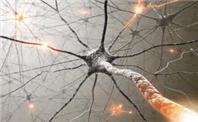Part II in the “Demystifying Pudendal Neuralgia” Series
In the previous post in our “Demystifying Pudendal Neuralgia” series, I talked about the difference between PN and PNE. In addition, I reviewed a list of treatment options for PN. Physical therapy was at the top of that list. Today, in this second post in the series, I will delve deeper into the role of PT in treating PN.
So what is the role of PT in treating PN?
For one thing, a pelvic floor PT is in one of the best positions to uncover the possible underlying causes of PN
That’s because a leading cause of PN is myofascial dysfunction. Indeed, hypertonic muscles (too tight muscles), myofascial trigger points (MTrPs), joint dysfunction, and connective tissue restrictions can cause pudendal nerve irritation and the symptoms of pudendal neuralgia: sharp, shooting, or burning pain in the territory of the nerve. Pelvic floor PTs are specifically trained to identify and treat these issues.
Another reason a PT can best identify the underlying causes of PN has to do with the amount of time spent with the patient. A typical PT appointment is one-hour in length and patients generally see their PT one-to-two times per week. Spending so much time with a patient allows the PT to take a detailed history and perform a very thorough physical examination to identify the collection of impairments at the root of the patient’s pain and/or dysfunction.
Besides being in the best position to uncover the cause behind a patient’s pain/dysfunction, an important role of a PT treating PN is to help the patient sort through all past tests, interpret the responses to various treatments, and make informed choices about diagnostic tests and interventions going forward.
In our clinic, time and again we have seen patients struggle through the complexity of this diagnosis because they do not have a medical professional willing or able to “steer their ship.” Having a provider in place to spearhead the patient’s healing can go a long way toward establishing a multimodal treatment plan to treat the underlying causes of PN.
So what are some of these underlying causes?
To read the post in its entirety, please click the following link: pelvicpainrehab.com/blog/20...
